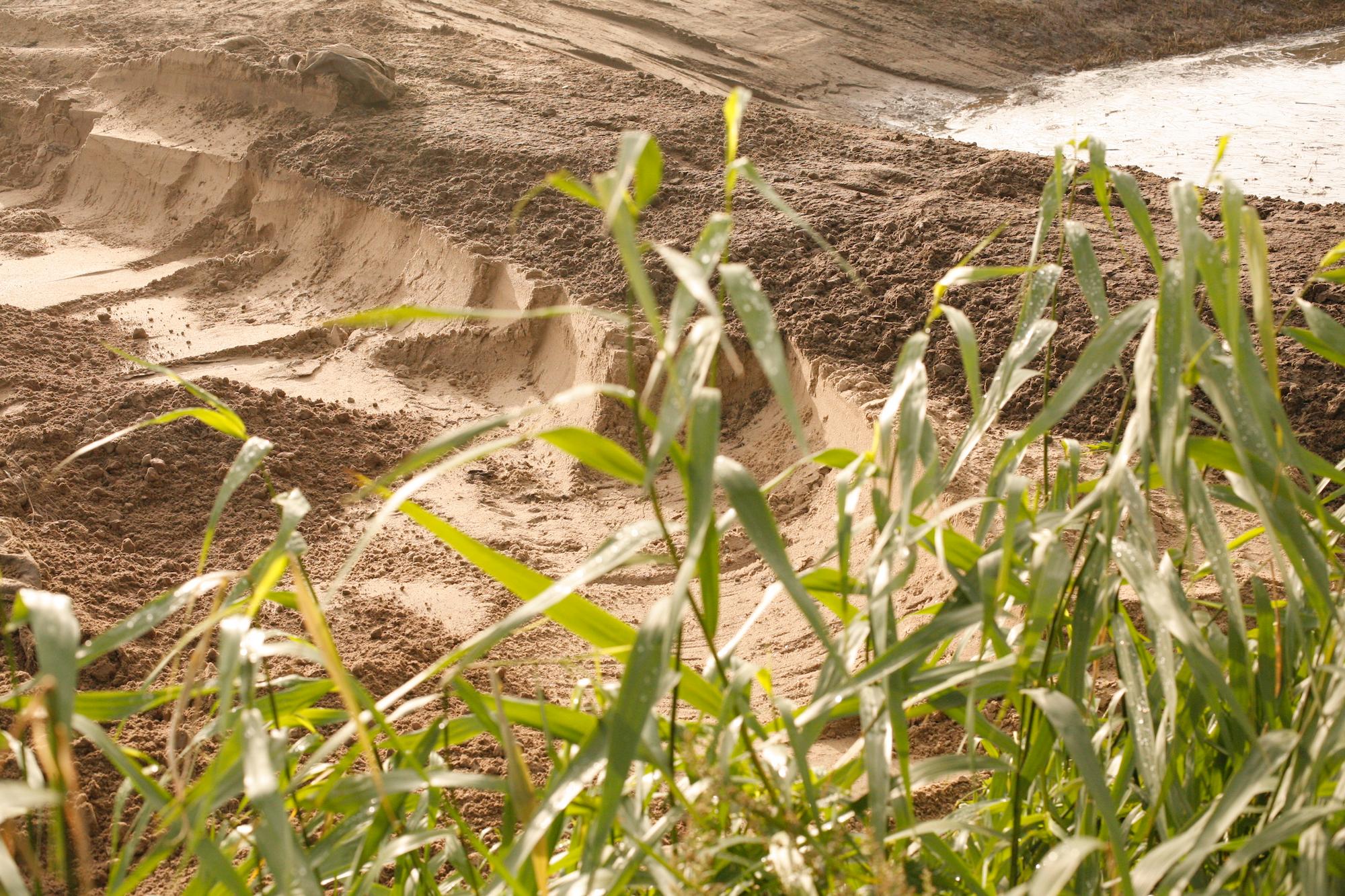Thursday morning, mid November. An 'ordinary' day in Amsterdam during COVID times. There are some cyclists on the street - but the emptiness is apparent. We are at Amsterdam Science Park: us being seven individuals working at Waag. We’ve come out here to discover which humans, plants, animals and organisms can be found at Amsterdam Science Park.
We’re about to search for the places where insects, plants and other life forms exist that we usually don’t notice: at dark or hidden spots, shortcuts, cracks in pavements and walls. This is also a way to familiarize ourselves with the Masterplan in development by the city of Amsterdam. This masterplan describes the plans, infrastructure, development and future use of the Science Park. It’ll form our starting point for the T-Factor project.
The bigger picture
But first, let’s zoom out for a moment. The Field Notes you’re reading now, are part of T-Factor. This European project researches what chances and possibilities are to be found within big, urban development projects for temporary initiatives or ‘meanwhile’ uses.
For the upcoming two years, groups in Amsterdam, Bilbao, London, Kaunas, Milan and Lisbon are rethinking the use of spaces ‘in the meanwhile’, while restructuring the developing area. finding the cracks and openings in these big plans for small, but meaningful activities attuned to the scales of every-day life and the social fabric of a neighbourhood. In Amsterdam, this approach is shaped in an inclusive way that offers space to a variety of life forms: people, plants, animals and microbes.
This walk and Field Notes are input for the participatory action research, as part of the explorative and inquiry phase of T-Factor.
About the area: Amsterdam Science Park
The Amsterdam Science Park is situated in the East of Amsterdam. Bordered by train-tracks and partly encapsulated by water, this terrain is home to the intangibles of scientific knowledge, innovation and fundamental research. Inhabited by students, research groups, workers, startups, locals and ‘statushouders’, this man-built environment is dominated by large institutional buildings. The University. The Data Centre. The Campus.
An area normally buzzing with life, but today this terrain is vacant. Although - is it really?
Field Notes
It is quite a shift to stop your daily work to walk around and just pay attention to your surroundings. We split up into duo’s and went looking for niches of habitable places. We saw a lichen growing on a gravestone in the Jewish Cemetary at the edge of the Science Park, a bird softly trampling the grass to lure out the worms outside of the Centre for Mathematics and Information Science, and students gathering at the kebab stall just beyond the floodgates that separate the park (at 4m below sea-level) from the residential neighbourhood of Watergraafsmeer.
The act of noticing is almost automatically followed up by the act of sharing.
Sharing these insights with each other, it is surprising how each of our attention is drawn to different places and different entanglements; one colleague points out how a tree has fused with a fence in a relation of mutual support, another points to the first fruiting caps of what might be transformed into a fungal forest, a third sees birds perching off the edges of the massive data centres rising up like cliffs in the landscape.
Non-human strategies for survival
- Observation: Those who survived the nip and tuck from the municipal green management. By: Sticking together / Growing very close to the waterside / Growing on the outskirts of the road / Pairing up with other thorn and irritant plants
- Ecological niche: Young trees and bushes, lichen, nettle, blackberry bush, thistle, reed
- Human action: Trimming trees, pruning / not pruning, driving on the inside bend

Man making / taking route
- Observation: desire path, bridge made from leaves?, obstruction by and dumping of plant trimming
- Ecological niche: grass, soil, plant trimmings
- Human action: extensive walking and searching for the shortest route over land/water, efficiency in dumping > on route or out of sight, using organic waste to make bridge

Beyond the anthropocentic view
In the end, we found that simply walking without any particular goal beyond paying attention, provides a wealth of knowledge and also acknowledgement of each other’s perspectives, sparking enthusiasm and cultivating relationships to a place. A common explorative walk turned out to be a great conversation starter for us to see, feel and talk about relations between people and the living and built environment.
Not only did we point out grasses, trees and insects; but through these living beings we got to discuss the points at which we intersect with them. The moment in which the human need for the shortest route leads to ‘natural’ desire paths of flattened grass. How the eco-historical use of the willow tree is also closely connected to the craft of basket weaving. And how hard it is for us humans to leave our anthropocentric view behind.
Suggestions for further reading/listening/research
- Rewatch the walk (NL) and view the symposium Being as Building (EN) of Waags’ artistic researcher Esmee Geerken. She did one at Amsterdam Science Park as well, with Ronald Boer from art collective de Onkruidenier. For the symposium, Geerken invited scientists and artists to think about new ways of building.
- Want to find out more about how to make the word habitable in the long term for human and nonhuman life? Read more on how to set up a Zoöp.
- The project Feral Atlas by Anna Tsing allows for a type of looking and interacting with information that goes beyond the 'factual' or 'archival', by weaving in a multitude of stories. In doing so, this method breaks with the tradition of gathering one single objective set of data.


